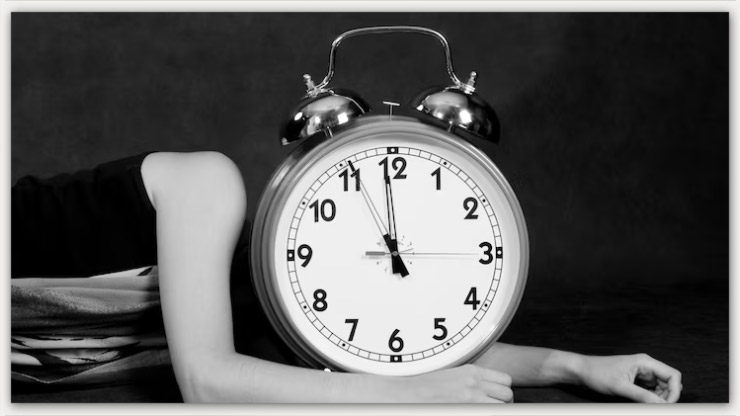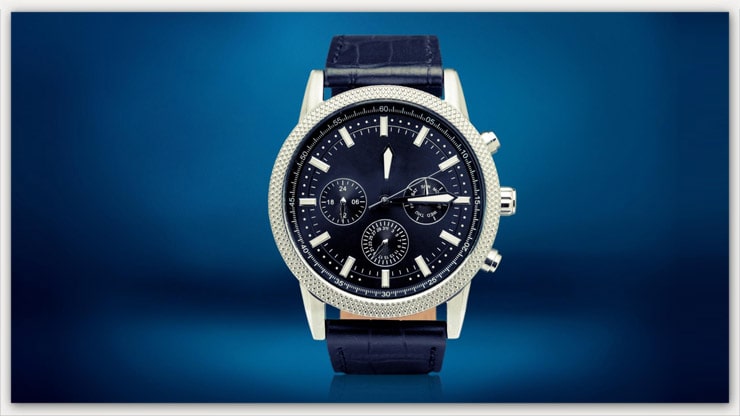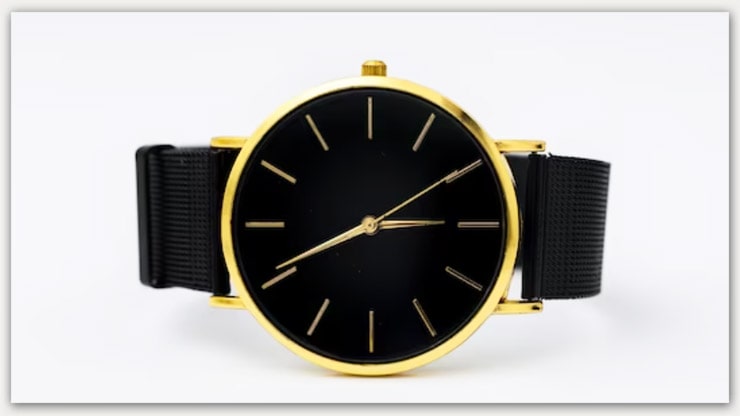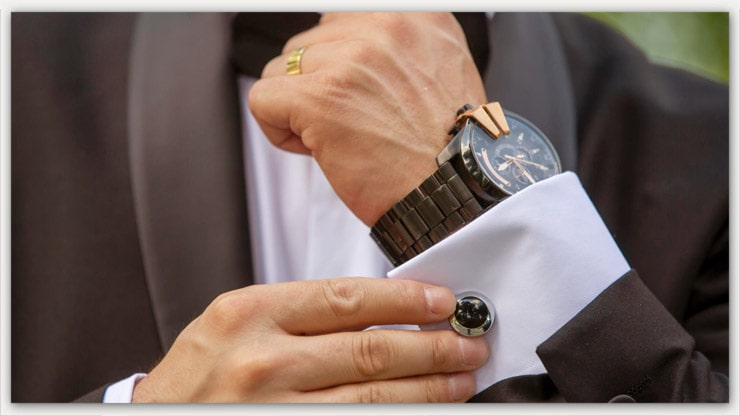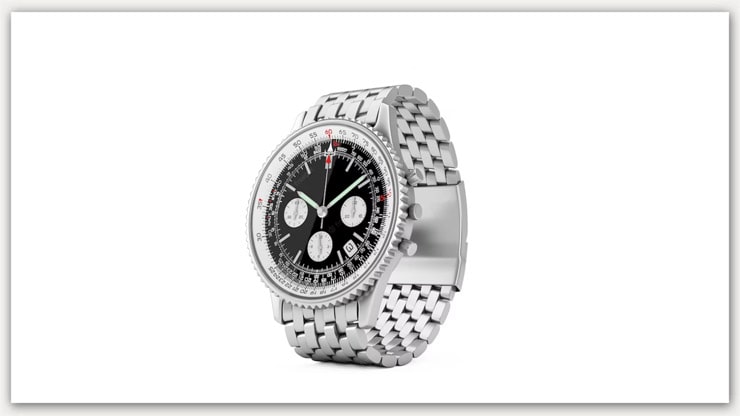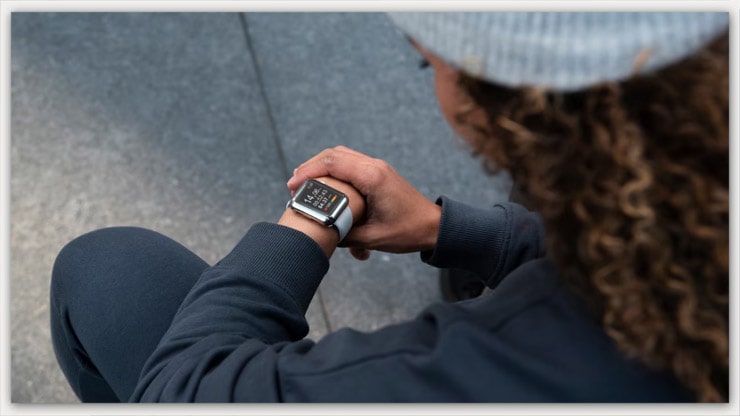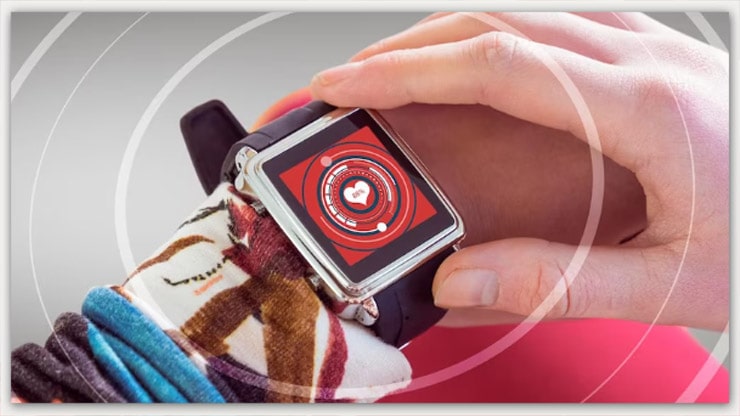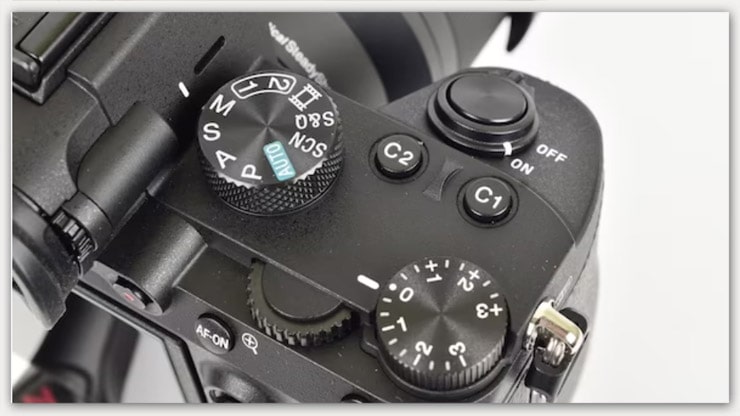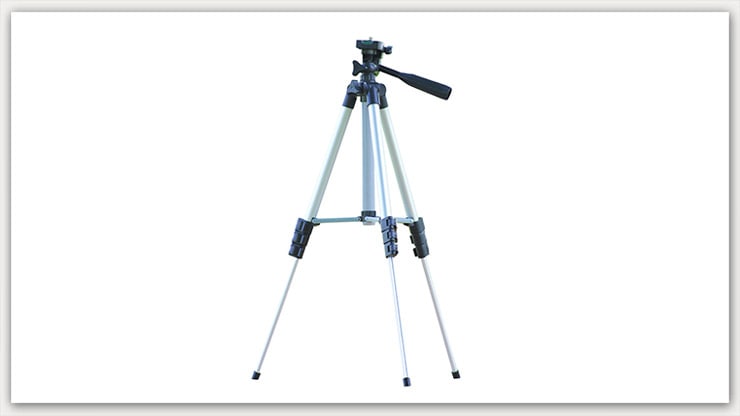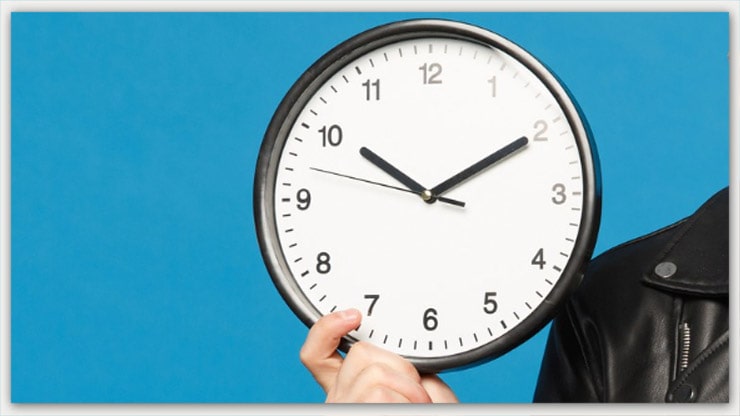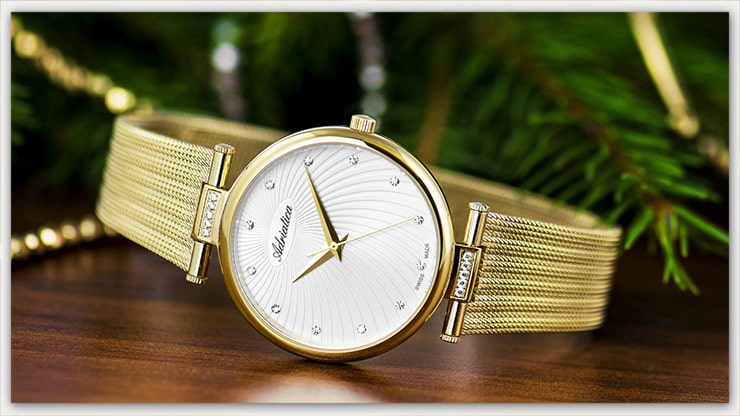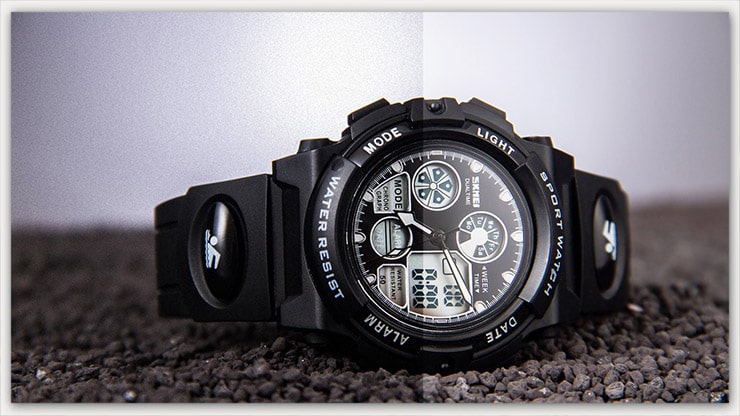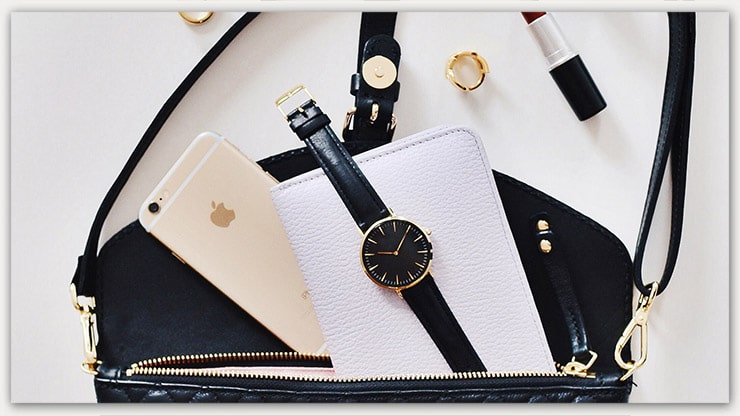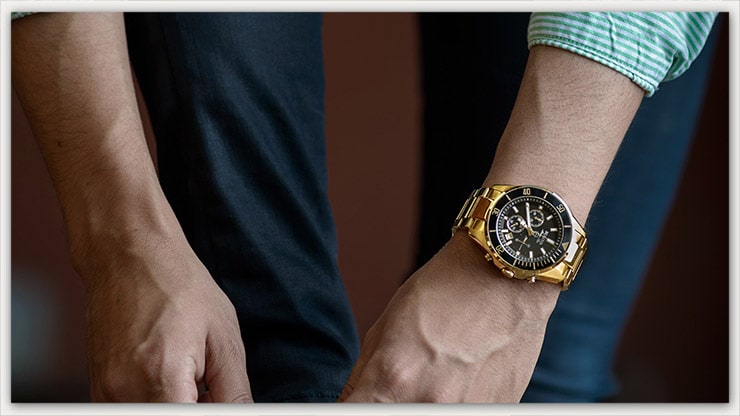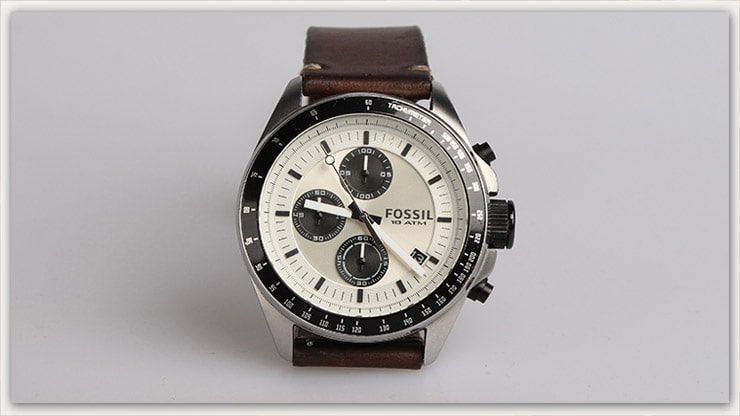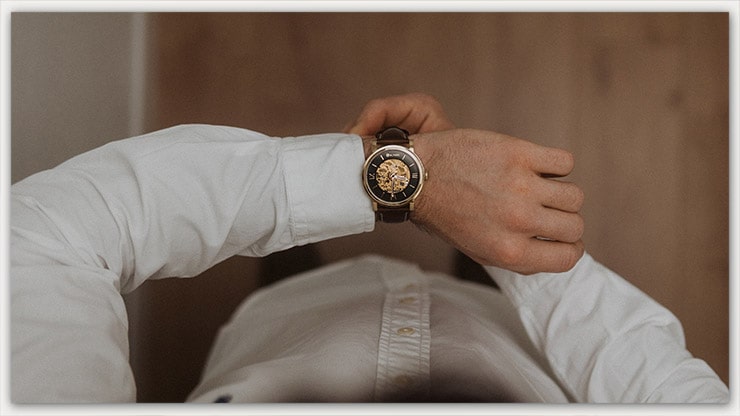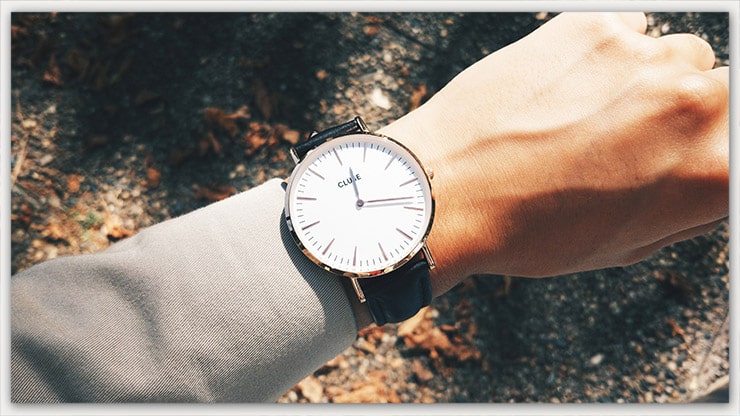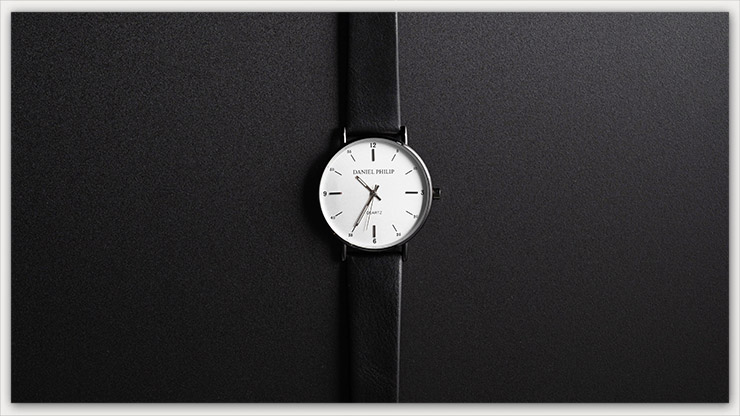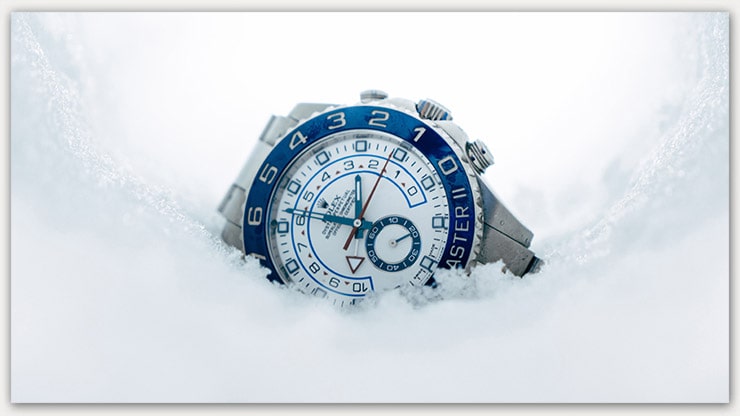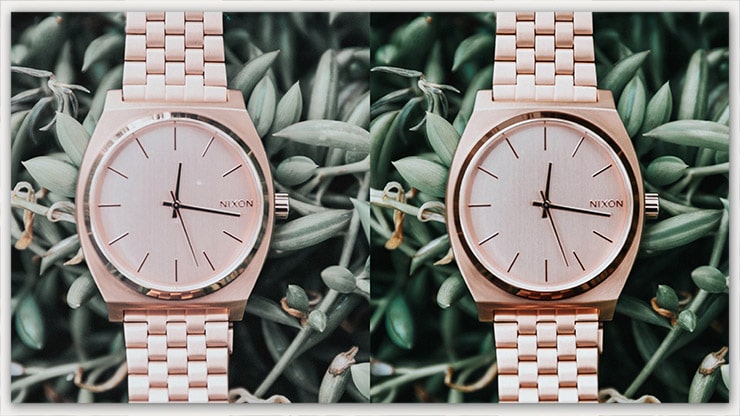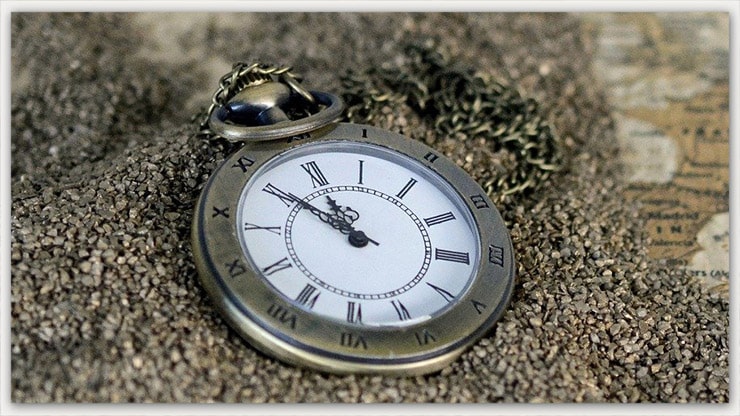Are you tired of taking mediocre photos of your beloved timepiece? Do you want to elevate your photography skills to the next level? Capturing the perfect shot of a watch or bracelet can be challenging, but with a few better watch photography tips and tricks, you can achieve stunning results.
Whether you’re a professional photographer or an enthusiast, these clock photography tips will help you take your skills to the next level. From studio lighting to composition, we’ll cover everything you need to know to shoot clocks like a pro.
Watch photography is a specialized field that requires a keen eye for detail and technical know-how. In today’s digital age, the demand for high-quality clock images has increased, whether for personal or commercial purposes.
You must go through these unique watch photography tips to do that. So, let’s dive into it.
Importance of Watch Photography Tips
Tips for watch photography are a crucial aspect to improve the photo of a watch. Learn about photography, hold the camera steady, and take a photo of every element like the dial of the watch, the side of the watch, the watch case, etc.
Beautiful images always enhance the marketing and selling of the watches. The images used to showcase clocks can heavily influence a customer’s decision to purchase. Therefore, it is essential to have high-quality photos that capture the watch’s unique features and beauty.
Utilizing proper lighting, angles, and composition can significantly enhance the watch’s visual appeal and increase its perceived value. Clock photography tips are important to ensure that you have the necessary skills and knowledge to create stunning images that showcase the clock’s beauty and attract potential buyers.
Professional photography of products reflects your brand. The image is the most significant item to verify the product. If you do maintain high-quality photos, you can catch the buyer’s attention. Otherwise, it is impossible to get.
The same goes for clock photography. The clock is a fancy product for anyone. Everyone will look for better quality and style. It won’t catch the attention if you can’t show it in the image.
A better photo reflects the quality of the product perfectly. There are different kinds of watches and their capturing ways. Whatever it is, ensure better quality. It will boost your brand and give you your desired fame.
Watch Photography Tips for Photographing Luxury Watch
Do you want to capture the essence and beauty of your watch detail? The following tips for photographing watches help you create stunning images showcasing intricate details.
Capturing stunning photos requires attention to detail and specific techniques. From lighting and composition to camera settings and editing techniques, we’ll cover everything you need to know to capture the perfect photo.
By following the list of tips, you can create stunning and eye-catching images that showcase the beauty and craftsmanship of the timepiece.
You can access this comprehensive tutorial covering composition, lighting, and everything. Follow these useful tips to become a master to improve your watch photography game.
Watch Photo Shot Tips
The marketing of innovative clocks is increasing rapidly. Every year new editions and features are launched. So, the marketing should be attractive. Nowadays, virtual exhibition has become the most common form of advertisement.
When a person buys a clock, he tries to find the best one per his demand. The photos of the product hold the main role of catching his attention. He will be diverted to others if the photos are not good enough.
To make the photo appealing, you have to make your hands mature for this. Practice is the only thing that helps. But don’t use any fake effects or anything. Just try to hold the natural and premium look of the photo.
Whenever you shooting watches, remember your target audience. Then, hit the final flash. Try to be creative and innovative in photography in general.
The preparation for each Shot is as vital as the actual photo itself. You can’t take a picture of a clock at night. Learning to capture a good one can take much time and effort.
The key to success is calm persistence and a laser-like focus on your goals. Gather some representative images, and then review them at your desk.
So, the photos need some variation in clicking. There are various kinds of types available in the orthography market. Some of them are:
Wrist Shot
When the watch is on the wrist of the model or mannequin. The wrist shot is a great way of connecting the viewer and the watch, as it shows how the clock would look on their wrist.
Main Shot
It reflects the dial of the clock mainly. The main shot is the most important image that showcases the clock’s design and features. This shot is usually taken from the front of the watch and highlights the watch dial, hands, and any other notable features.
Catalog Shot
It is a combined shot of details of the clock. A catalog shot refers to a photo that is carefully composed and styled to depict a watch in its most appealing light. To create a catalog shot, you must carefully consider the lighting, angles, and composition of the shot.
Lifestyle Shot
It clears the imaginary vision of the person willing to buy. The lifestyle shot in clock photography can convey a sense of sophistication, elegance, and luxury. By capturing the watch pictures in action in a natural setting, the photo becomes more relatable to viewers.
Social Media Shot
It is for social media publishing. A well-shot photograph can capture the beauty and elegance of the watch, making it more appealing to customers on the SMS platform.
Tips on Watch Photography Equipment
The right equipment for photographing can help to take your watch photograph from good to great. From a specialized camera or smartphone to a softbox, backdrops, or any is essential.
Photography is an art. So, you have to learn this art to bring it up in your soul. There are some precautions to take before shooting the elements of the watch. To get professional feedback, you must follow some steps. Those are described below:
Camera
Guidelines for selecting a camera for clock photography are analogous to those for other kinds of photography. You’ll need a better camera to get the right Shot. Your financial situation is a major factor in each of them.
It’s only fair that the bulk of your photography budget goes toward the equipment. You can have the best lighting and setup in the world, but if the camera can’t pick up on it, it won’t matter. If you don’t, the wonderful clock you’re trying to depict will look more like any other watch and lose some appeal.
Lens
Lenses are the way to go. If you want to understand your subject, nothing is more important than physically being in the same room as them. You and the clock have privacy.
When taking a picture of a clock, there is always more to it than meets the eye. There is always the possibility of unexpected difficulties.
The Sigma 105mm macro is my go-to lens for many watches. It is accurate, inexpensive, and compatible with many cameras.
A macro lens is required equipment for product photography. You shouldn’t stress too much if you don’t have one. It’s possible to achieve a fantastic close-up shot with other lenses.
Non-optical tubes can attach between a camera and a lens. They make it possible to zoom in much more closely. If you like taking close-up pictures, this is a fantastic way to boost the power.
Camera Setting Tips on Clock Photography
There are some factors in the camera setting. You need to set that correctly. So, let’s focus on that:
Exposure
It’s time to go over exposure. Most of the time, in Aperture mode, the f-stop is the automated option. It works quite well from all perspectives. To control it manually, you have to select the manual mode.
It will give the best control. It is effective to shoot quality product images.
ISO
Reduce noise (the effect of extra grain in an image) using the lowest ISO level. Digital enhancement is commonly available in every camera manufacturer. It enables evenly lit shooting, although this usually results in increased image noise.
While it’s true that specific cameras perform better in low light than others, you shouldn’t worry too much about this as you’ll use direct sunlight or a lightbox.
Shutter Speed
The shutter speed controls the time the shutter is open, and the sensor is exposed to light. Its light-gathering capacity increases in proportion to the time it is open. For instance, a slower exposure time requires shooting at f/7 since you need more light to compensate.
If you’re doing this without the aid of a camera stand, you can end up with a blurry image. In addition, you shouldn’t take pictures with such lengthy exposures if you don’t want the sweeping second hand to blur. To avoid this, you should go any slower than a twentieth of a second.
Increasing the ISO gradually can help bring an overly dark photo into a more usable range. Nonetheless, remember to keep an ear out for any background commotion. Sometimes all you need to fix a shot is a little lighter outside if something is not clicking.
Aperture
In photography, the aperture is about how much the image is focused. When you change the aperture, you change the depth of field and the subject your lens focuses on. The aperture can narrow by increasing the f-stop value.
Decreasing the aperture brings the foreground into sharper focus while the backdrop blurs out. Sharpness is maintained across the frame at a large aperture setting, such as f/8. What this means is that your image has a greater depth.
Indeed, the inverse is also correct. Increasing the aperture by reducing the f-stop a shallower can achieve. By lowering the f-stop value, you can isolate the foreground of an image while allowing the background to recede into the background.
Aperture is entirely up to personal preference. Thus, there are no hard and fast rules about it. If you want the foreground and background to be in focus, a larger depth may be the way to go.
A narrow depth of field can be pretty appealing in close-up shots. Explore different options and see which one works best for you.
Tips on Clock Image File Format
Shoot in RAW if your camera can handle it. When talking about photos, a RAW file is the original. Raw files are typically far larger than their compressed counterparts, JPEGs.
RAW files are full of information that can use to simplify post-capture modification. On the other hand, the bigger file sizes that result from shooting in RAW are the main drawback. Consider using JPEG if you’re strapping for storage capacity.
Tripod
When taking photos, a tripod is essential for steady shots. This tremor will become more noticeable the nearer you go to the subject you shoot. You’ll lose all of your sharpness if you move even a little.
Since they are not equal, flipping up the mirror might cause enough vibration to render a sharp photo nearly impossible.
Mirror lock-up (the camera’s “mup function”) is what you want to use in this situation. With this feature, the mirror will initially flip up, and the camera will snap a picture after a delay, mitigating the effects of mirror vibrations on the final product.
In addition, check the tightness of all the controls and clamps before taking a picture. Use the remote or the in-camera timer if possible. Put some weight on the hook at the top of the central column for further support.
Lighting Setup Tips
One of the most crucial elements of photography is lighting, which must be perfect in every picture. There are instances when you have no option but to accept poor lighting.
There are solutions for difficult lighting situations, whether in a room with brighter bulb lights or outside in winter. However, some of these could require some practice. So, let’s concentrate on a few things.
Natural Lighting
Everyone appreciates some well-placed windows, but using natural light is notoriously fickle. It seems to me that the benefits of normal light outweigh any drawbacks. Images captured in natural light appear less artificial and more genuine.
For this reason, photographers often seek overcast days when the light is much more forgiving. Intense sunshine makes it simple to overexpose a photo.
Artificial Lighting
Artificial light sources such as tungsten and fluorescent bulbs are ubiquitous today. Direct light has been both a savior and a curse several times. “tungsten” describes the warmer, yellower, and redder tones emitted by incandescent light bulbs.
In my opinion, this is the worst possible lighting situation for shooting timepieces. It can make post-production more difficult, as well as alter the original colors of the subject.
A further challenge while photographing under fluorescent or strobe lighting is the chilly temperature they produce. As a result of interference, some lights will appear to flutter and change color in different frames.
This is because of the light’s frequency, which causes a shift in the hue or brightness of the source. Changing the exposure time to one compatible with the lights’ current will prevent this interference.
To completely capture the light’s cycle, set your speed to 1/50 second if the bulb operates at 50 hertz. To lessen the flicker, use a combination of artificial light.
Reflections
Problems with reflections are almost inevitable when illuminating a space. The clock’s screen is a hallmark of timepieces. This could be appealing in some photos but distracting in others.
By shifting the camera’s angle, you can eliminate it. This will lessen the intensity of it to a level where you can enjoy it.
Using diffusers on your light sources is an excellent way to eliminate glare if you still need to cut down on reflections. As is common practice in clock photography, it will diffuse the light so that the timepiece isn’t glaringly illuminated.
Post-Processing Tips
The next step, watch photo post-processing, is where the real magic happens, so let’s hope you can make some truly gorgeous watch images. No matter how good your photos are, you should never ignore the post-processing step.
As a result of post-processing, issues with shadows, color correction, and exposure will be eradicated. That way, the clock can have the most convincing appearance possible. Because of misrepresentation, all product returns are made. Online stores must provide accurate representations.
If you want to get rid of any imperfection, you can use spot healing and clone stamp to clean, dust removal, or remove unwanted reflections or any from your photo. You need post-processing to make stunning images.
When you need extensive post-processing work done on your photos, you can use a professional photo editing service to do the job.
Companies like this have teams of editors and designers that can easily crank out large amounts of post-production work. The assistance of a third-party business will allow you to accomplish more in less time and take better pictures.
Focus on the Watch Details
Given the focus close enough to get the details of the watch is wise to familiarize oneself with the specifics. Try to do this before attempting to capture visually appealing images of these timepieces. Consider whether the clock has a mineral crystal, sapphire, or Plexiglas face.
Anti-reflective coating on clocks gives them a bluish tinge, while an uncoated face reflects their immediate surroundings. The shape of the crystal (plain or round) and its protective housing are also important considerations.
Set the Hands of the Watch
Many amateur photographers ignore the time on their clock as irrelevant. When the clock’s arms obscure the logo or any design element in a shot, it makes the watch look strange and ugly. But the professionals typically set the position of the hands at 10:10.
With this time, the watch face looks visually balanced and attractive. This divides the area between the hands into thirds. As a bonus, any branding or text will still be legible.
Polish the Clock Before Shooting
Wipe the watch down with a microfiber towel before the watch shoot. Remove any dirt, fingerprints, or other debris before taking a sharp photo.
Investing in a dirt cleaner and some gloves will make your work more manageable and fun. As a result, you won’t have to worry about leaving any fingerprints behind when taking photos.
Simply removing the crown from the mechanism will prevent it. It needs to set the time before each Shot. Once that’s done, you may use a photo editing app to put the crown back on.
Eye-Catching Background
A non-reflective background is ideal for photography. The specific backdrop you employ is ultimately up to you and your product photography concepts.
Visit your neighborhood hardware shop to pick up some Plexiglas, acrylic to glass, a mirror, metal, rubber, stone, bricks, sand, wood, etc., as a backdrop for your next clock shot. The background should be with a clock’s aesthetic and maker in mind.
Use a retro-themed backdrop, for instance, when shooting pocket watches. Jewelry of a delicate nature would be a lovely backdrop for a female-targeted model. Avoid using a background color that blends in with the clock for better visibility.
Artificial Processing
No matter how often you polish the clock, you can’t eliminate all the dust. You may need to resort to artificial enhancement if you have problems eliminating dust and filth.
Color correction, contrast enhancement, sharpening of fine details, and many more image editing tasks can all be accomplished with AI. This task is full of complexity. A novice retoucher will have difficulty producing work up to par in the clock industry.
Contact service and they will save you from trouble, meet your deadlines, and provide you with the highest quality photo editing at a reasonable price. They also offer competitive rates.
Proper Props
Use multiple watches if you want to tell a tale about them. Photography props should be eye-catching and attractive. You should start by picking a concept for your photo shoot. Choose a location with water sports gear, for instance, for pictures of diving clocks.
Build a Harmonious Composition
Taking beautiful photos of watches requires a firm grasp of photography composition principles. Consider the composition carefully, especially where you put the object.
For example, the “rule of thirds” in photography states that the subject placement should be in the image’s left or right third. Props are a crucial part to take better photos. So, make sure to heed the advice of props photography experts.
Don’t cram too much into the frame. Instead, make use of negative space photography techniques. Try to make sure about space in the background. You need to study how to photograph a watch to get a good shot.
Remove Unwanted Shadows
There shouldn’t be any windows, mirrors, or other shiny surfaces. The shadows could obscure the features or lessen the contrast. It’s best to take care of any shadows on the watch screen during the shoot, as they may be tough to edit off later.
It is possible to remove shadows with the aid of digital Processing. A black foam core board can also conceal the camera lens, the device’s edge, and your arm. You might also try covering your clock with a black poly or a similar object.
Wrist Shot
A picture depicting a timepiece on the wrist of a model. Photos of products in a natural setting, such as a family home, make for excellent advertisements. Seeing the watch on a person’s wrist helps them visualize wearing it. Please put it on yourself or have a helper do it, then snap a picture.
To assist your customers in connecting with you, adopt this technique, but don’t let it make you sound unprofessional. Everything about your appearance, from the lighting to your clothes, should be top-notch.
For instance, the sleeve of a tuxedo can draw attention to a dress watch. The model can wear a denim jacket to highlight an otherwise laid-back look. Clock photography is on the rise to give consumers a personal connection to the things they purchase.
Hero Shot
In addition to a stage, you’ll need a few props and a few different backdrops. Such photos are ideal for a website’s home page or usage as billboards. Putting your clock on display can make a bolder message than the image quality would suggest.
Perhaps you aren’t even trying to make a point, but use this as your product platform. You can stage your product in various ways, beginning with props and progressing through using many timepieces in various configurations.
E-commerce vendors increasingly seek creative watch images to highlight the product’s individuality. In conclusion, use your imagination!
Catalog Shot
Photos with a white or black background are extremely common. They make for an excellent subject for capturing minute details. You can snap shots reminiscent of those found in a watchmaker’s brochure. You can’t go wrong with these shots for your online store or on Amazon.
Focus
Use the focus stacking feature to take shots at odd angles by concentrating on different frame portions. You can combine them into one sharp image if you want your photos to look good from every aspect close to the watch.
You can also employ a focus stacking program to capture a crisp, sharp image. Selective focus and a small field are two techniques that can be used to great effect when shooting close-up photography as well.
Ensure Low ISO
ISO settings tend to be relatively high on today’s cameras. You should choose a low setting and shoot within the constraints of that sensitivity. It will give you sharp and clear shots. Also, make sure you choose an appropriate lighting method.
Use Extension Tubes
It is a common misconception that special lenses are suitable for capturing high-quality images of watches. Many lenses, however, focus closely enough to allow for a spectacular photo. As an alternative, you can install some extension tubes to the lens.
It will enhance the lens’s focusing distance. Taking close-up pictures has never been easier than with this cheap device. Use macro-lens, like the Canon EF 100mm f/2.8L, to get close to the intricate details of a watch face, wristband, crown, or other parts.
Spread the Light
Diffuse lighting is ideal when you’re shooting clocks. Lighting modifiers like softboxes, umbrellas, etc., are available in a studio setting. A reflector board reflects and diffuses the light.
Most watch photographers think light photo boxes are a good idea, even when shooting in well-lit environments. The lack of direct sunlight via a window might be a diffuse lighting source for amateurs.
Shooting shots on a cloudy day or first thing in the morning is also beneficial. Using a light curtain might also be an option for blocking a window. For the best illumination, some photographers opt to construct their photography reflectors.
Proper Stabilization
The camera wobble will be more noticeable if you are not far from the object. A camera stand is not the most crucial item, but it can be handy when photographing a Rolex watch.
You can also take studio shots or close-ups with this gear. I would suggest the Neewer Carbon Fiber because it is a sturdy and high-quality option.
Use Stand
Seek out a watch display case at your neighborhood jewelry store. It’s also available to buy online. As a bonus, some marksmen favor mounting putty to secure the clock. A watch stand is a must-have for any watch enthusiast, helping to keep your timepieces safe, organized, and easily accessible.
Macro Shot
Clock photography often features extreme close-ups of the timepiece’s inner workings. It emphasizes their aesthetic value. This is a great way to set your watch apart from the rest and get closer to the watch.
Displaying such a willingness to conceal even the most minute information is telling. A good macro lens is necessary for this, though. Also, not every clock will have a favorable image. If you try this advice out, you should usually see positive outcomes.
Flecto
Photographers of timepieces all over the world use the term “flecto.” It describes the intentional creation of a reflection on the clock face. In contrast, flexo is useful for drawing attention to a clock’s domed crystal and providing depth perception.
It may also obscure dial features and lessen overall contrast if used excessively.
Keep Practicing
Still, taking good pictures of watches is a laborious process requiring plenty of trial and error. If you do the math, you’ll find that you’ll be hard at work for well over an hour. You need your camera and can begin looking for the ideal lighting arrangement.
You might take fifty pictures or so before you get it correct. So, don’t be alarmed. Next up is the fine-tuning phase. Similar adjustments are useful to the photo’s minute elements. You can gradually get to the final product.
You will then digitally enhance by highlighting various components along the road. As time goes on, you’ll start to hit walls and long to advance to the next level.
FAQs
Of course, you need to use a tripod for photography. But it is not mandatory enough. You’ll need it to stabilize your camera for any technical watch photo session. This is crucial when taking close-up photos in a workshop.
Yes, you should photograph the strap. It is also a part of the design. You may miss a big part of the watch without capturing this. It also reflects beauty.
Two lights are preferable, or use a single light with a reflector. Remember that the lighting must be just right for the picture you want. With one light, shadows can help set the tone for a photo and provide drama.
Final Words
The image of the watch should convey a lot of information about the timepiece and the manufacturer. It must make them feel a certain way to convince them to buy. Discussing as many facets and particulars of the clock as possible is important.
Commonly, you cannot shoot a clock too many times. Any idea what this means? In other words, you must take pictures of the clock in as many different settings as possible.
That is how you shoot a clock to ensure your client will hire you again when he has to market other timepieces. To ensure this, follow those luxury Watch Photography Tips.
You may read:


